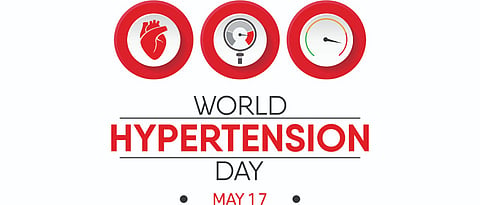

World Hypertension Day is observed each year on 17 May. The primary objective of the day is to raise awareness of the condition that affects millions of people across the country and abroad.
As we are fighting a much greater health crisis at this moment, people with hypertension or high blood pressure are more prone to experience severe complications. Many elderly people suffer from hypertension, which makes them more vulnerable to COVID-19.
World Hypertension Day was inaugurated for the first time in May 2005, since it has become an annual event. This year's theme is 'Measure Your Blood Pressure, Control It, Live Longer' - to raise awareness of high blood pressure ( BP) in all communities around the world.
WHAT IS HYPERTENSION?
Hypertension-or high blood pressure is a severe medical condition that raises the risk of heart attack, stroke, kidney failure and blindness considerably. It is one of the world's leading causes of premature mortality. The key factors to the rise in hypertension include unhealthy diets, physical inactivity and alcohol and tobacco use.
Normal blood pressure is about 120/80 mm Hg. It can lead to a heart attack or stroke if not managed, and can even be fatal.
SYMPTOMS
There are no signs or symptoms in most people with high blood pressure, even though blood pressure readings exceed excessively high levels.
Some people with high blood pressure may experience shortness of breath or nosebleeds, headaches but these signs and symptoms are not clear and typically don't appear until high blood pressure reaches a severe or life-threatening level.
TYPES OF HYPERTENSION
Primary Hypertension: Primary high blood pressure is also known as essential hypertension. Most hypertensive adults fall into this category. Smoking, drinking too much alcohol, tension, being overweight, eating too much salt and not having enough exercise are factors in lifestyle.
Changes in your diet and lifestyle will reduce blood pressure as well as the risk of hypertension complications.
Secondary Hypertension: Secondary hypertension occurs when the cause of your hypertension is identifiable-and potentially reversible.
The secondary type is only about 5 to 10 per cent of hypertension. This is more common in adolescents. An additional 30% of those 18-40 years with hypertension suffer from secondary hypertension.
The causes of secondary hypertension include narrowing of blood supplying arteries to the kidneys, illness of adrenal gland, side effects of some medications include birth control pills, dietary aids, stimulants, antidepressants and other over-the-counter drugs, stop sleep apnea, hormone malfunctions, anomalies in the thyroid gland.
Other sub-type includes: resistant hypertension, malignant hypertension and isolated hypertension.
Lifestyle changes to reduce the risk of hypertension
High blood pressure or hypertension can be regulated by
